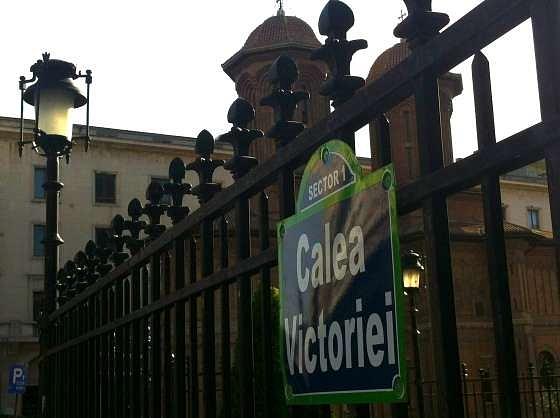One of Bucharest's main avenues Calea Victoriei to be re-shaped to make room for bike paths



One of Bucharest's main boulevards downtown, the often overcrowded Calea Victoriei, is set to become narrower once the municipality builds its planned bike lanes on enlarged sidewalks.
Bucharest Mayor Sorin Oprescu recently promised sidewalks on Calea Victoriei would be enlarged, and some portions of the boulevard would even become pedestrian during weekends.
A project recently approved at the Bucharest municipality will keep the one way on Calea Victoriei, but enlarge the narrow – and sometimes non-existent sidewalk, by taking some space from the three-four lanes.
Car traffic will be limited to two lanes with a width of 3 meters each. The sidewalks will be enlarged, varying between 1 meter (in front of the Vernescu House) and up to 13 meters in front of the National Art Museum MNAR.
The future bike paths will cross the Calea Victoriei at the intersections with streets Ghe. Manu, M. Moxa, Dacia, Stirbei Voda, Campineanu and Regina Elisabeta. The project was created by ProCons XXI for Bucharest's Street Administration unit.
Calea Victoriei is a major Bucharest avenue, named Ulita Mare or the Brasov road in the 17th century, as it was part of the trade route between Bucharest and Brasov at the time. At the time paved with wood, the street got another name in early 18th century, the Mogosoaia wood paved road (in Romanian, Podul Mogosoaia).
Later in the middle of the 19th century it was paved with cobblestone and asphalted. It was named Calea Victoriei in late 18th century after the Independence War (victoriei means victory in Romanian). The avenue is currently home to several luxury hotels, museums, and luxury stores.
editor@romania-insider.com
(photo source: Yvette Larsson)